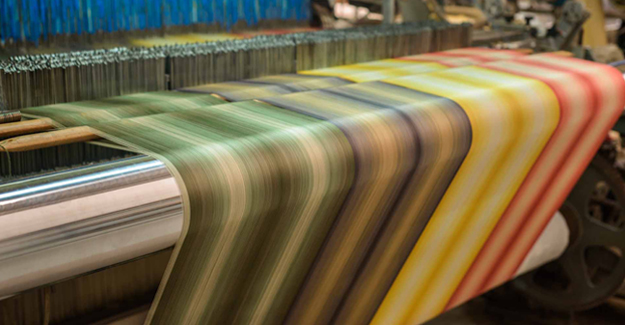
India's Fabric Production Slows Down
India's fabric production slackened a bit in the last few months. During April-January 2016-17 fabric production at 53513 million square metres (msqm) was 0.10% lower than in the previous year's period.
Production of cotton fabric improved 1.62% to 32263 million square metres during this time. Production of blended fabric at 9132 msqm was 2% than CPLY. And production of MMF fabric was down 5.79% to 12118 msqm.
Mills maintain fabric share at 3.56%
Production of fabric by the mill secctor was at 1906 msqm, a slight fall of 1.29%. The share of mill sector in total fabric production also fell to 3.56% from 3.60%, during the period under review. Cotton fabric production by the mill sector at 1263 msqm was 0.32% higher than in the previous year's corresponding period. However, mills produced less of blended fabric during the period. At 579 million squre metres, production was 4.93% lower. MMF fabric production at 63 msqm remained unchanged during the period.
Handlooms fare better with govt. support
Total fabric production of the handloom sector was 6697 million square metres, a growth of 6.25%. Cotton fabric production at 5907 msqm grew 4.86%. Blended fabric production was up 4.6% to 91 million square metres. And MMF fabric production witnessed the highest growth of 20.07%. The improved performance of the handloom sector in the last couple of years can be attributed to the strong government support for this sector.
Production in the powerloom sector falls
Powerlooms, which account for the largest share of fabric production, witnessed a decline of 1.79% during April-January of the current fiscal year. Production was to the tune of 30303 million square metres. Cotton fabric production was slightly lower by 0.11% to 13068 msqm. Production of blended fabrics at 6711 msqm was 3.28% higher than in CPLY. MMF fabric production in the powerloom sector also fell by 6.68%, to 10523 msqm.
Hosiery production picks up
Knitted fabric production at 14608 msqm was 0.93% higher than in CPLY. Cotton fabric production grew 2.13% to 12025 msqm. Blended fabric production fell marginally by 0.51% to 1750 msqm. And MMF fabric production fell sharply by 11.58% to 832 msqm.
Mills accounted for 3.56% of the total fabric production, the powerloom sector 56.63%, hosiery 27.30%, and handlooms 12.51%. While fabric production by mills and powerlooms over the last 3-4 years has remained almost unchanged, production in the handloom and hosiery sectors has picked up significantly.
Weaving investments from December-February
In the last three months from December- February, the DIPP received 19 IEMs for fabric manufacturing and processing. A knit fabric manufacturing facility is expected to come up in Andhra Pradesh. Gujarat has once again emerged the textile investment destination of choice. In the last three months, five proposals for fabric manufacturing and finishing of fabrics have been received.
Weavers will have to wait it out for better times
Investments have slowed down since November, and capacity utilisations are down. The demonetisation in November had its impact on production and sales, with weavers burdened with huge inventories, due to cash crunch and the change to cashless transactions. With almost 60-70% of fabric production in the decentralised & unorganised sector, fabric sales have been impacted.
Moreover, the higher input prices has further affected fabric production. This is coupled with lower demand for apparel, both in the export and domestic market, adding to the pile-up of fabric inventories. Fabric manufacturers will have to wait it out some more before markets and demand start improving. More importantly, weavers will have to start going cashless, a practice that is very new to this industry. Hopefully, the GST will help in organising the industry and making it financially compliant.
Textile Excellence
If you wish to Subscribe to Textile Excellence Print Edition, kindly fill in the below form and we shall get back to you with details.








